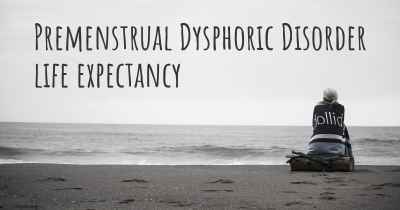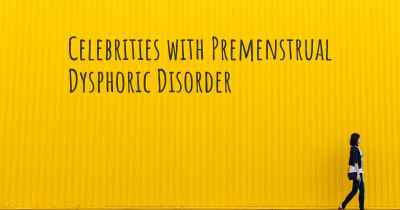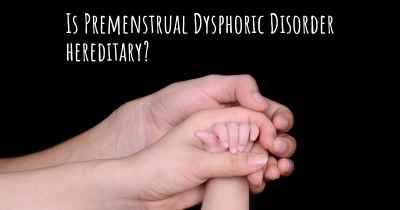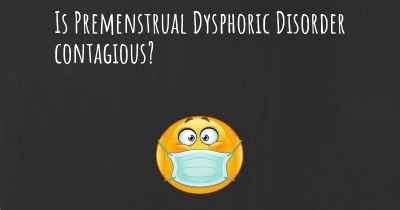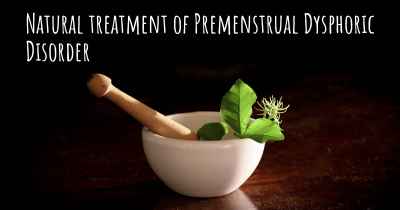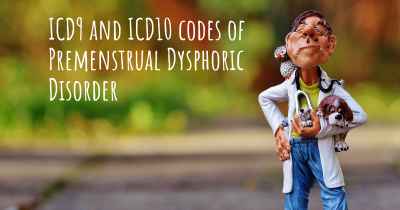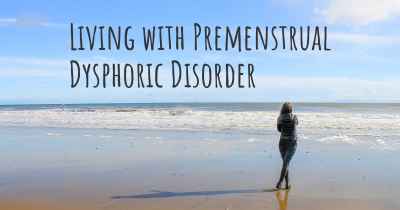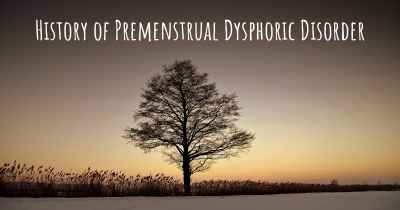Premenstrual Dysphoric Disorder diet. Is there a diet which improves the quality of life of people with Premenstrual Dysphoric Disorder?
Are you aware of a diet that can improve the quality of life of people with Premenstrual Dysphoric Disorder? Is there a diet that is suggested to avoid when having Premenstrual Dysphoric Disorder? See if there is a diet that can improve the quality of life of people with Premenstrual Dysphoric Disorder, recommended and to avoid food when having Premenstrual Dysphoric Disorder
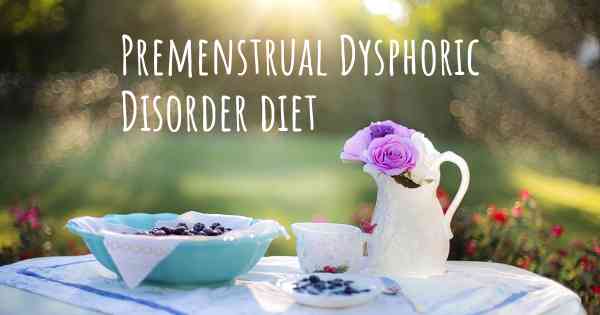
Premenstrual Dysphoric Disorder (PMDD) Diet: Improving Quality of Life
Premenstrual Dysphoric Disorder (PMDD) is a severe form of premenstrual syndrome (PMS) that affects a significant number of women. It is characterized by intense physical and emotional symptoms that occur in the luteal phase of the menstrual cycle, typically one to two weeks before menstruation. While there is no specific diet that can cure PMDD, adopting a healthy and balanced eating plan can help alleviate symptoms and improve the overall quality of life for individuals with PMDD.
The Role of Nutrition in PMDD
Nutrition plays a crucial role in managing PMDD symptoms as certain foods can influence hormone levels, mood, and overall well-being. A well-rounded diet can help stabilize blood sugar levels, reduce inflammation, and support neurotransmitter production, all of which can contribute to a more stable mood and reduced PMDD symptoms.
Key Dietary Recommendations for PMDD
While individual needs may vary, the following dietary recommendations can be beneficial for individuals with PMDD:
- Balance Macronutrients: Ensure your diet includes a balance of carbohydrates, proteins, and healthy fats. Complex carbohydrates like whole grains, fruits, and vegetables can help regulate blood sugar levels and stabilize mood. Lean proteins such as poultry, fish, legumes, and tofu provide essential amino acids necessary for neurotransmitter production. Healthy fats like avocados, nuts, and olive oil support hormone production and brain health.
- Increase Fiber Intake: Consuming an adequate amount of fiber can help regulate bowel movements and reduce bloating, a common symptom of PMDD. Include fiber-rich foods such as whole grains, fruits, vegetables, and legumes in your daily diet.
- Focus on Anti-inflammatory Foods: Chronic inflammation can worsen PMDD symptoms. Incorporate anti-inflammatory foods like fatty fish (salmon, mackerel), leafy greens, berries, turmeric, ginger, and green tea into your diet.
- Limit Caffeine and Alcohol: Caffeine and alcohol can disrupt sleep patterns, exacerbate mood swings, and increase anxiety. Limiting or avoiding these substances can help manage PMDD symptoms more effectively.
- Ensure Adequate Micronutrient Intake: Certain micronutrients play a role in mood regulation and hormone balance. Include foods rich in magnesium (leafy greens, nuts, seeds), vitamin B6 (chickpeas, salmon, bananas), and omega-3 fatty acids (fatty fish, flaxseeds, walnuts) to support overall well-being.
- Stay Hydrated: Drinking enough water is essential for overall health and can help alleviate symptoms like bloating and fatigue. Aim for at least 8 cups (64 ounces) of water per day.
- Consider Supplements: In some cases, supplements may be beneficial to address specific nutrient deficiencies or support hormone balance. However, it is important to consult with a healthcare professional before starting any new supplements.
Additional Lifestyle Tips
In addition to dietary changes, adopting certain lifestyle habits can also contribute to managing PMDD symptoms:
- Regular Exercise: Engaging in regular physical activity, such as aerobic exercises, yoga, or walking, can help reduce stress, improve mood, and alleviate symptoms associated with PMDD.
- Stress Management: Implement stress-reducing techniques like deep breathing exercises, meditation, or engaging in hobbies to help manage PMDD symptoms.
- Sleep Hygiene: Prioritize quality sleep by establishing a consistent sleep schedule, creating a relaxing bedtime routine, and ensuring a comfortable sleep environment.
- Support Network: Seek support from friends, family, or support groups to share experiences and gain emotional support during challenging times.
Conclusion
While there is no specific diet that can cure PMDD, adopting a healthy and balanced eating plan can significantly improve the quality of life for individuals with PMDD. By focusing on macronutrient balance, increasing fiber intake, consuming anti-inflammatory foods, and ensuring adequate micronutrient intake, individuals can support hormone balance, stabilize mood, and reduce PMDD symptoms. Additionally, incorporating lifestyle changes such as regular exercise, stress management, quality sleep, and seeking emotional support can further enhance overall well-being. It is important to remember that each person's experience with PMDD is unique, and consulting with a healthcare professional is essential for personalized guidance and support.
Posted Mar 2, 2017 by Kristina 1145
Posted Mar 2, 2017 by Natalie 505
Posted Mar 23, 2017 by HP 750
I do recommended avoiding foods or drinks which cause energy as the lows will run in with pmdd and be worse. Caffeine for me on an off day doesn't really do anything at all too my energy level physically.
Posted Apr 11, 2017 by Rachel 850
Posted Apr 12, 2017 by Maribel 1000
Posted May 16, 2017 by Kristie 1125
Posted Jul 24, 2017 by Limerencia 2070
The diet should be supplemented with adequate amounts of B6, Magnesium and calcium.
Caffeine, sugar and alcohol should also be avoided.
Adequate water intake is important.
If the person has the MTHFR gene mutation (linked to PMDD) they should avoid folic acid and obtain folate through natural food sources only.
Posted Aug 3, 2017 by Lynda Pickett 700
Posted Sep 10, 2017 by son678 2000
Posted Oct 22, 2017 by Deanna 2550
by Dr. Daniel J. Heller
Dr. Daniel J. Heller
Dr. Heller is a family practitioner who specializes in helping patients with hormonal conditions like PMS & PMDD; diabetes and prediabetes; and other chronic diseases. He is the founder, formulator, and clinical director of PMS Comfort. [more]
Don't let the word "diet" scare you off: the diet for PMS and PMDD isn't about counting calories or stepping on a scale or starving yourself to fit into a dress. Diet is a word that simply means "what you eat." It's about feeding your body right so your hormones and your menstrual cycle can get, and stay in balance. That old saying, "You are what you eat" was never more true than when talking about how food can help cure PMS and PMDD.
We're often asked, "What does food have to do with hormones, PMS, and PMDD?" In fact, every hormone and cell in your body is made out of what you eat, and is constantly responding to changes in your body as a result of what you eat. So diet has everything to do with keeping you balanced and feeling like yourself all month long. What's more, a diet that supports healthy hormonal balance, and that helps relieve PMDD and PMS offers the added benefit of keeping your heart and blood vessels healthy, your weight more manageable, and your complexion youthful and clear.
The PMS and PMDD Balance Diet
Our PMS Balance Diet is simple. Healthy plant foods, high-quality proteins, good fats, and very little junk food will do wonders for your cycle and your hormonal balance. Several of our other articles discuss food and diet for PMS and PMDD symptoms, but the PMS Comfort Balance Diet is the blueprint for an optimal health diet. It's based on two foundations: our many years of experience helping thousands of women with premenstrual symptoms get back in balance and feeling well again, using healthy diet; and hundreds of hours poring through old and new scientific research so we could find out exactly what is the healthiest way to eat. No fad diets here, and no confusion about what to eat and what is good for you. We've sorted through all that for you. And the PMS Comfort Diet lays the foundation of a healthy diet for everyone, not just women with premenstrual symptoms.
What to Eat to Prevent and Relieve PMS
The PMS Balance Diet is a plant-based diet: nutrition researchers are now largely in agreement, after decades of controversy, that the best health comes from a diet rich in healthy plant foods, high-quality protein, healthy fats, and minimal junk food. We've made it as simple and portable as possible:
Eat your vegetables. You can't go wrong with veggies. They're great raw, in salads, or cooked: steamed, sautéed, grilled, baked...or just rely on your creativity. Fresh vegetables are best; frozen are second-best; and canned vegetables are a last choice. If you use canned, look for the least amount of salt, and buy tin rather than aluminum cans. Vegetables are a great source of vitamins, minerals, phytonutrients, antioxidants, and fiber. Grandma was right: eat your vegetables.
Veggie Tip: Go French-fry-free. Choose colorful, low-starch vegetables like leafy greens and cabbage family vegetables over starchy vegetables like potatoes. Also, don't forget, corn is a grain and peas are a legume or bean: they don't count as vegetables. The best starchy vegetables are root vegetables like parsnip, yam, and carrots.
Enjoy fruits. Fruits are fantastic raw or cooked (think baked apples, not apple pie.) Fruit is naturally sweet, and high in the same beneficial nutrients as vegetables. Like vegetables, fresh is best; frozen is second best, and canned is a last choice. If you get canned, get the kind that's canned in water or its own or other fruit juices, not in syrup.
Fruit Tip: Limit your fruit juice. Fruit juice is mostly sugar and water, and doesn't have the fiber of whole fruit. We recommend enjoying it in moderation, four times per week maximum, for most people.
Rely on whole grains: Whole grains are an ideal staple energy food. Whole wheat, oats, rye, barley, brown rice, wild rice, corn, quinoa, millet, and buckwheat contain fiber, heart-healthy plant sterols, plus they're filling. To the degree you can, eat grain as close as possible to its whole form. Thus, brown rice, wild rice, Irish or Scottish oats, and cracked wheat are whole or nearly whole, whereas even whole-wheat flour is highly processed. However, for practicality's sake, whole-wheat and rye breads and crackers are a convenient source of whole grains; are still far superior to white flour and white bread; and they're super healthy.
Grain Tip: When it comes to whole-grain breads, the buyer must beware. Many breads marketed as whole-grain contain whole wheat flour but are made, in reality, from mostly white flour (also labeled unbleached or enriched wheat flour). The first ingredient in whole-grain bread should be whole-grain flour. The best whole-grain breads contain no white flour, and are hardy and toothsome. If you're used to very light white bread, whole-grain bread may take some getting used to—but it's worth it.
https://www.pmscomfort.com/pms-diet/
Posted Aug 9, 2018 by April 3000
